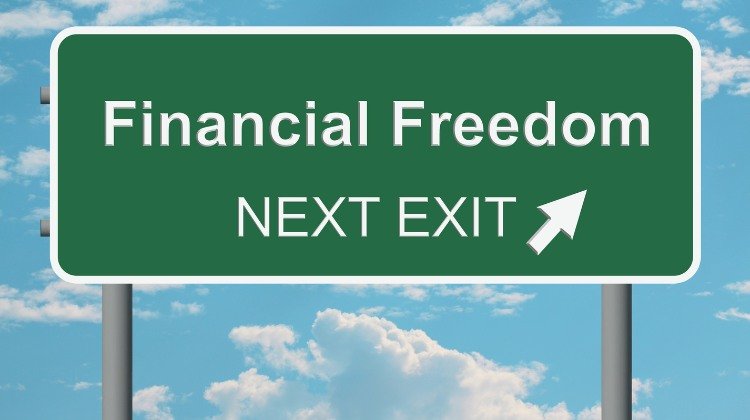Life often presents us with tricky financial decisions. One common dilemma is choosing between paying off debt and saving money. This article will guide you through the decision-making process, weighing the pros and cons of each.
Table of Contents:
- Debt Repayment: Reclaiming Financial Freedom
- Building Savings: Securing Your Future
- Paying Off Debt vs Saving: Factors to Consider
- Striking a Balance: Can You Do Both?
- Debt and Income Levels: A Real-World Look
- Navigating Economic Uncertainty
- Conclusion
Debt Repayment: Reclaiming Financial Freedom
Debt can feel overwhelming. High-interest debt, like credit card debt, strains your finances with substantial interest payments. Aggressively paying down debt can provide financial relief and improve your credit score.
The Debt Snowball Method
This method focuses on paying off your smallest debts first, regardless of the interest rate. This gives you a psychological boost and motivates you to tackle larger debts later. Paying off that small $500 balance can create a sense of accomplishment.
This can spur you on to tackle bigger debts. Discover the benefits of this and other debt repayment options by exploring various savings resources.
The Debt Avalanche Method
The avalanche method prioritizes tackling high-interest debts. You make larger payments on your highest interest rate debt first. This method minimizes the total interest paid over the long term.
Start with the debt that costs you the most, regardless of the balance. Selling items could help you pay off auto loans or other debts sooner. This saves you money in the long run.
Building Savings: Securing Your Future
Saving money provides security. It enables you to handle unexpected expenses like car repairs and medical bills, make large purchases like a down payment on a home, and plan for a comfortable retirement.
Emergency Fund
Financial experts advise having 3-6 months of living expenses saved in an easily accessible emergency fund. A 2019 Federal Reserve study found nearly half of families couldn’t cover a $400 emergency. This highlights the importance of savings for life’s unexpected events.
An emergency fund acts as a safety net, covering unexpected expenses. This prevents you from relying on credit cards and accumulating more debt when emergencies arise. Your savings accounts serve as a critical buffer.
Retirement Savings
Saving for retirement might seem distant, but starting early is essential. It allows your money to grow over time through the power of compounding. Even small contributions can make a difference. Explore available personal loan options to boost your retirement savings if needed.
Explore available options like a Roth IRA and other retirement savings options and make plans to start saving today.
Paying Off Debt vs Saving: Factors to Consider
The ideal choice between paying off debt and saving depends on your individual circumstances. Several key factors should influence your decision. Consider things like disposable income, bad credit options, and different loan rates.
Interest Rates
High-interest debt, such as credit cards, quickly accrues interest charges. Prioritizing this type of debt is generally wise. Learn more about the consequences of not paying off debt, especially your card debt.
Income and Expenses
Before making financial decisions, carefully analyze your income and expenses. Create a budget to allocate funds for necessities, debt repayment, and savings. The 50/30/20 budget (50% needs, 30% wants, 20% savings and debt repayment) is a solid starting point. You may need a savings calculator, loan calculator, or even refinance calculator to best understand what this split means for your finances.
Modify the 50/30/20 budget to fit your circumstances and create a realistic spending plan. Consider where you can reduce spending to free up more money for savings goals and paying off debts. A living calculator may be beneficial.
Financial Goals
Clearly define your short-term and long-term financial goals, such as buying a home, early retirement, or starting a small business. These goals shape your financial strategy and provide the motivation to make disciplined choices.
Focus on what truly motivates you, perhaps aiming for a debt-free lifestyle or specific targets. A month CD or a longer-term CD could be appropriate based on your short-term and long-term savings goals. Review current year CD rates and CD rates for the term that aligns with your target financial goal.
Striking a Balance: Can You Do Both?
It’s rarely an absolute “either/or” situation. Often, it’s best to tackle debt while also saving. Splitting your resources is a good approach, especially when some debts have manageable interest rates.
Prioritize High-Interest Debt
Allocate more money towards paying down high-interest debt. This limits accumulated interest charges. Still, allocate funds to your emergency fund or other savings accounts. Explore refinance rates and consider refinancing a student loan to manage debt effectively.
Automate Savings
Set up automatic transfers from your checking account to your savings account. This helps grow your savings effortlessly. Consistent savings, even small amounts, contribute to long-term financial well-being.
Debt and Income Levels: A Real-World Look
Debt levels often correlate with income levels. A Federal Reserve study indicated that 57% of cardholders earning under $50,000 annually carry credit card debt compared to 38% of those earning $100,000 or more.
Prioritizing expenses and saving are crucial for debt reduction, particularly as costs continue to rise. Effective money market accounts or a high-yield checking account could contribute to a successful financial plan.
Navigating Economic Uncertainty
Economic downturns, such as recessions and inflation, complicate financial planning. Preparing for these events is critical. Factors such as recession anxieties and job market projections make 2024 a good time to review paying off debt vs saving.
High inflation is finally over, but it could reverse. If laid off, a job search could take five to six months, sometimes longer. Remember, changing jobs could mean lower wages, impacting your financial stability. Carefully examine lender reviews if you are thinking about getting a personal loan, auto loan, business credit card, or a balance transfer.
Conclusion
Choosing between paying off debt and saving is a complex decision. The right approach aligns with your unique financial situation and goals. There isn’t one perfect answer; it depends on your specific circumstances.
Careful planning and evaluation are crucial, and flexibility is important as unforeseen events can arise. Building a strong financial foundation requires balancing debt repayment and saving strategically.









Reader Interactions